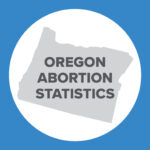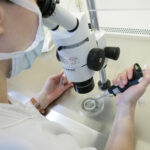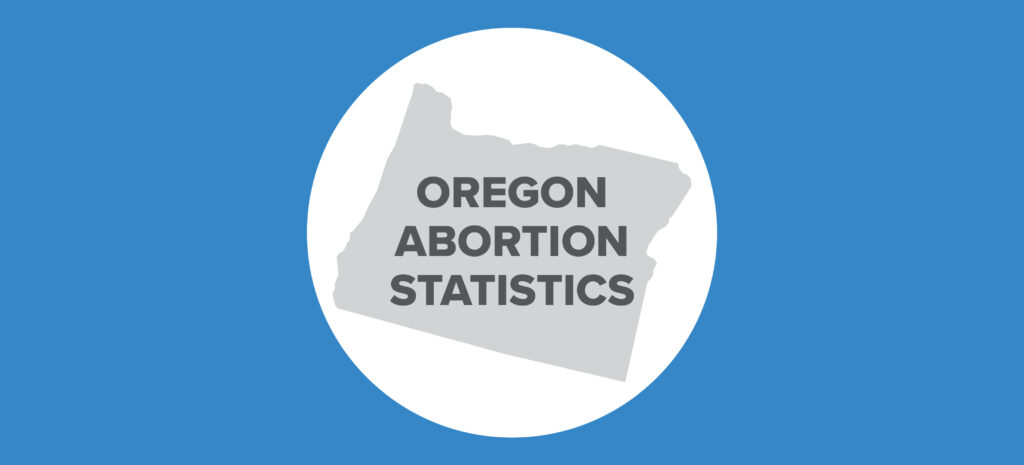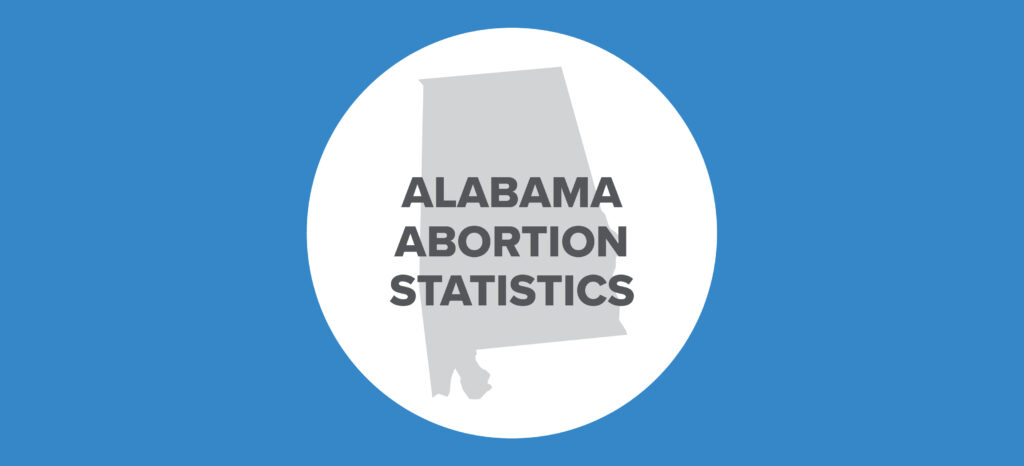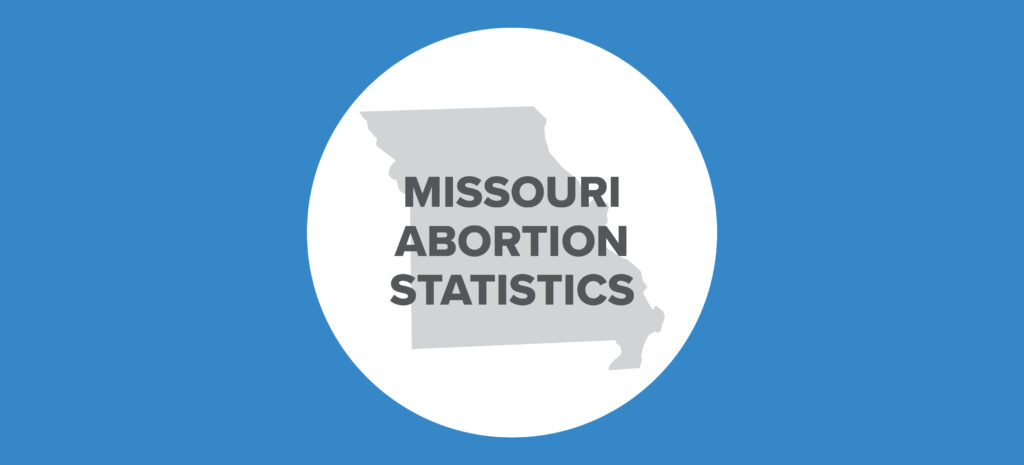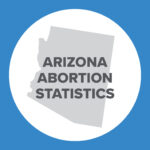Abortion Reporting: New Jersey (2017)

New Jersey’s annual abortion report for 2017 was provided to the Charlotte Lozier Institute by the New Jersey Department of Health and Senior Services. The state report shows a decline in abortion but includes less than half the abortions performed in the state.
Changes in New Jersey Abortions, 2016-2017

Information on New Jersey’s state abortion rate and Planned Parenthood’s New Jersey market share is not publicly available. Decreases shown here are based on New Jersey’s state report, which is incomplete, as explained below.
Abortion Totals and Trends
In 2017, 21,484 abortions were reported in New Jersey, a 12 percent decrease from the year before (Fig. 1). However, because only hospitals and licensed ambulatory care facilities in New Jersey are required to report abortions, this total does not reflect all abortions occurring in the state. In fact, in 2017, New Jersey’s reported abortion total was less than half the state total estimated by the Guttmacher Institute. Chemical abortions were reported to decrease, dropping by 26 percent from 5,152 in 2016 to 3,802 in 2017, although chemical abortions are underreported in New Jersey. New Jersey does not report the state abortion rate, but the Charlotte Lozier Institute estimates that the rate declined from 14.6 abortions per 1,000 women ages 15 to 44 in 2016 to 12.8 in 2017, just under the national rate of 13.5 (Fig. 2). This is an underestimate of the 2017 rate because not all abortions in New Jersey are reported. The Guttmacher Institute estimates that New Jersey’s 2017 abortion rate was 28.0, over twice the national rate.
State Report Summary
Ninety-five percent of the abortions reported in New Jersey were performed on New Jersey residents. Three percent were performed on women from Pennsylvania and two percent on women from other states. Women in their twenties made up the largest age group undergoing abortions in New Jersey (57 percent of the total). Twenty-seven percent of the reported abortions were performed on women ages 20 to 24, and 29 percent were on women ages 25 to 29. Thirty percent of the reported abortions were on women in their thirties, with 19 percent on women ages 30 to 34 and 11 percent on women ages 35 to 39. Nine percent of the abortions were on girls age 19 or younger, and four percent were on women age 40 or older.
Minority women were overrepresented among the women seeking abortions in New Jersey in 2017. Only 30 percent of the reported abortions were performed on white women, even though white women make up 69 percent of New Jersey’s population of women of childbearing age. Sixty-five percent of the reported abortions were performed on nonwhite women, who compose just 31 percent of New Jersey women of childbearing age. CLI calculates that the white abortion rate in New Jersey was 5.6 abortions per 1,000 white women ages 15 to 44 in 2017, compared to the black abortion rate in New Jersey of 29.7 abortions per 1,000 black women in their reproductive years – making it one of the states with the highest racial disparity in abortions. Four percent of the abortions were performed on women whose race was not reported. Twenty-one percent of the abortions were performed on Hispanic women of all races.
Eleven percent of the abortions were performed on married women and 88 percent on unmarried women, while one percent were performed on women of unreported marital status. Many of the women had previously experienced pregnancy. A quarter had one previous live birth, and 34 percent had two or more. Nineteen percent had one prior abortion, and 20 percent had two or more previous abortions. Thirty-eight percent of the women had never had a live birth, and 60 percent reported no previous abortions. The number of previous live births was unknown for two percent of the women and the number of prior abortions was unknown for less than one percent.
In New Jersey, abortions performed after 14 weeks must be performed in a hospital or ambulatory care facility, and procedures other than dilation and evacuation after 14 weeks must be performed in a hospital. The definition of procedure “does not include the issuing of a prescription and/or the dispensing of a pharmaceutical,” that is, chemical abortions. Abortions after 18 weeks of gestation must be performed by an obstetrician/gynecologist who has admitting privileges at a hospital within a 20-minute drive of the abortion facility. Doctors must report any patients who experienced complications. Only hospitals and licensed ambulatory care facilities are required to report abortions.
Eighty-five percent of the abortions reported in New Jersey were performed at or before 14 weeks of gestation. Thirty-six percent were performed at six weeks or earlier, and 24 percent were performed between seven and eight weeks of gestation. Eleven percent were between nine and 10 weeks, seven percent between 11 and 12 weeks, and six percent between 13 and 14 weeks of gestation. Thirteen percent of the reported abortions were performed after 14 weeks. Six percent were performed between 15 and 17 weeks, and two percent were performed between 18 and 19 weeks. An additional four percent of the abortions reported in New Jersey – 923 abortions – were performed at 20 weeks of gestation or later, the point at which unborn babies can feel pain. Two percent of the reported abortions were performed at unknown gestational ages. The actual proportion of abortions performed earlier than 14 weeks in New Jersey may have been greater, because only abortion facilities that meet the standards to perform abortions after 14 weeks (ambulatory care facilities and hospitals) are required to report.
Eighty-two percent of the abortions reported in New Jersey were surgical curettage procedures, a category which includes dilation and curettage and dilation and evacuation abortions. Eighteen percent were chemical abortions (including labor induction abortions). There were 26 hysterectomy/ hysterotomy abortions and zero intrauterine instillation procedures. Twenty-nine abortions were performed using unspecified methods. The true percentage of chemical abortions was likely greater because many of the abortion centers that perform early, nonsurgical abortions are not required to report.
New Jersey Abortion Facilities
In New Jersey, there are at least 41 abortion centers (not including hospitals and doctors’ offices that perform abortions), of which approximately 23 are licensed ambulatory care facilities or ambulatory care facility satellites. Nineteen of the licensed facilities are operated by Planned Parenthood.
Only licensed abortion facilities are required to report abortions, and fewer than half the abortions occurring in the state get reported. In 2017, the New Jersey Department of Health and Senior Services reported 21,484 abortions. In contrast, the Guttmacher Institute estimates that 48,110 abortions were performed in the state that year. The official health department total is just 45 percent of the Guttmacher estimate. While the health department reports show a drop in chemical abortions between 2016 and 2017, it is unknown whether total chemical abortions in the state actually decreased. Abortion centers that perform abortions up to 14 weeks, when most chemical abortions occur, do not need to be licensed or report abortions to the Department of Health and Senior Services. Consequently, chemical abortions in New Jersey are likely underreported.
State Ranking
In the Charlotte Lozier Institute’s 2016 survey of abortion reporting across the 50 states, New York City, and the District of Columbia, New Jersey tied for 46th in quality, near the worst. Because abortion reporting is not required of every facility, New Jersey’s reports are incomplete and do not present a full picture of the abortion methods used in the state and the gestational ages at which abortions are performed. In addition, New Jersey does not publish its abortion reports online for public access, as many other states do. Historically, New Jersey’s lax regulations have put women at serious risk and allowed criminal abortion doctors to operate unchecked. New Jersey could protect women and babies in the state by increasing its oversight of abortion facilities and requiring that every abortion be reported.
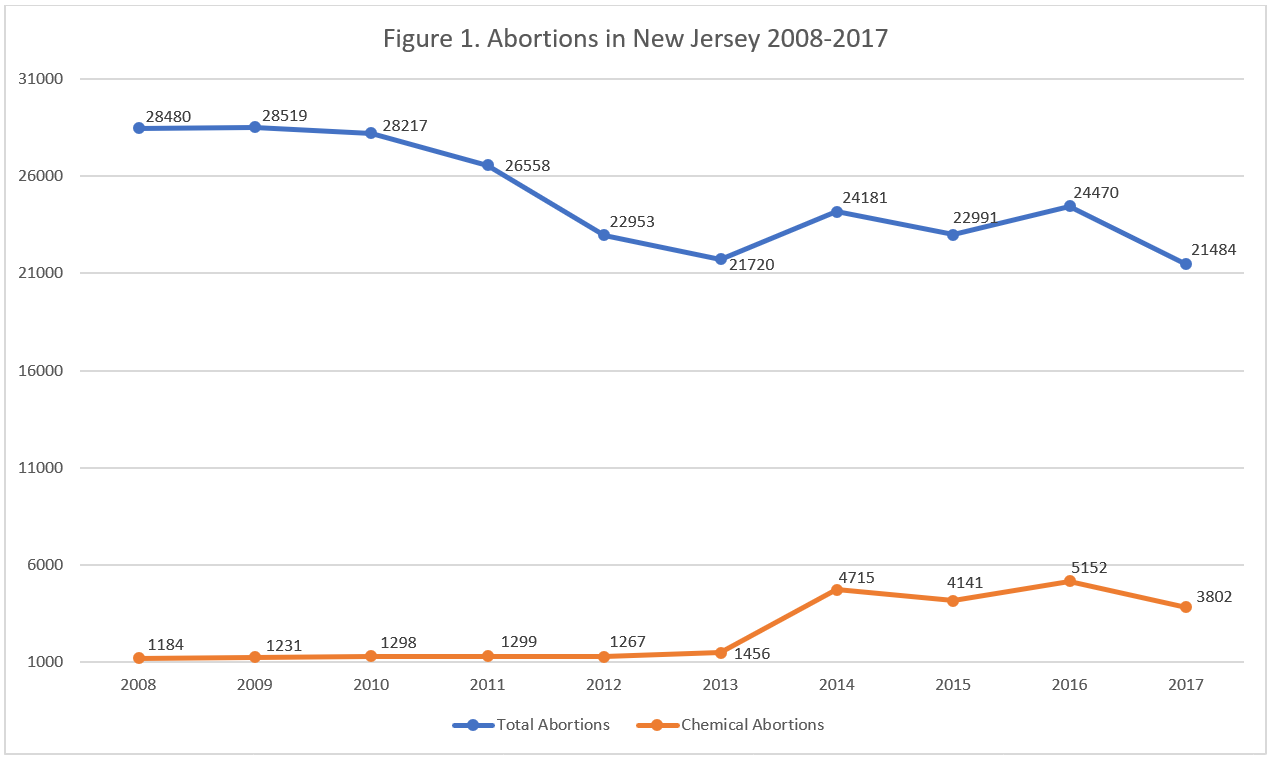
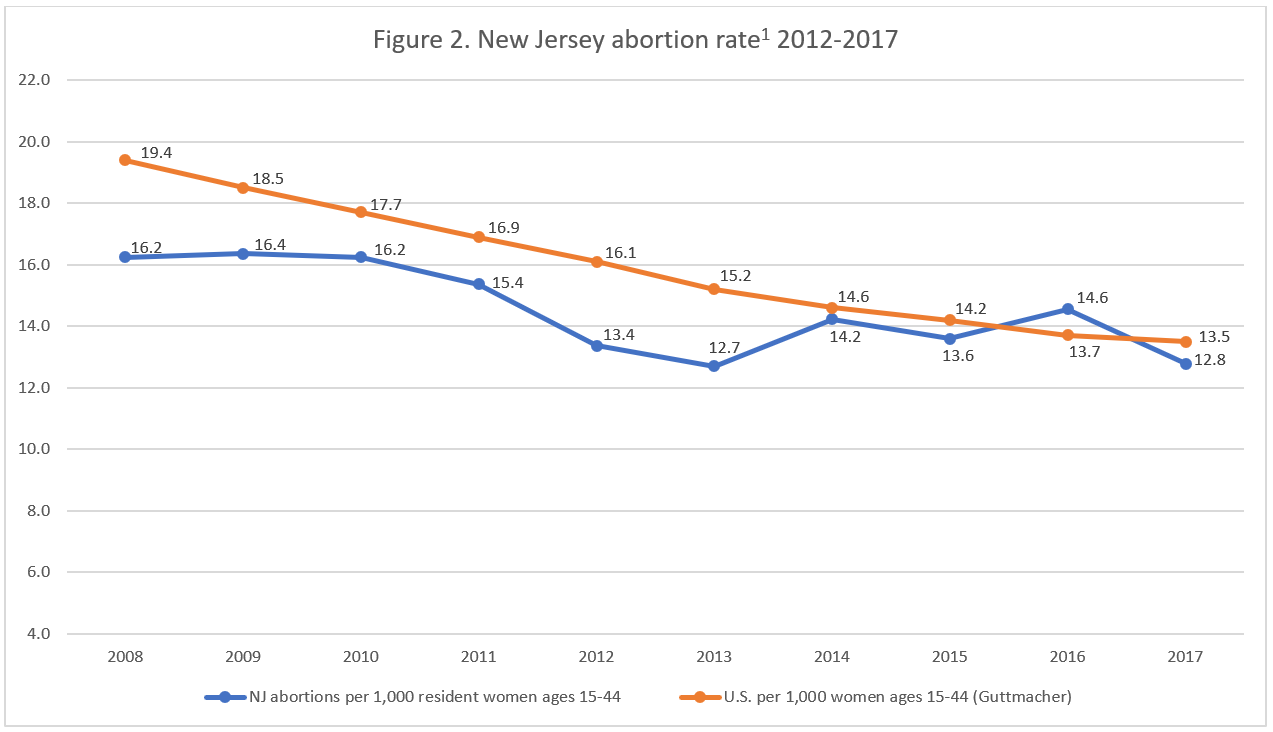
- New Jersey does not report the state abortion rate. Rates were calculated by CLI using population estimates from the United States Census Bureau. The rates were calculated using the following formula: (total number of abortions performed in New Jersey ÷ number of resident women ages 15-44) x 1,000. Rates may differ slightly from previous CLI articles due to revised abortion totals and population estimates. Because New Jersey underreports abortions, the true abortion rate is likely higher.










